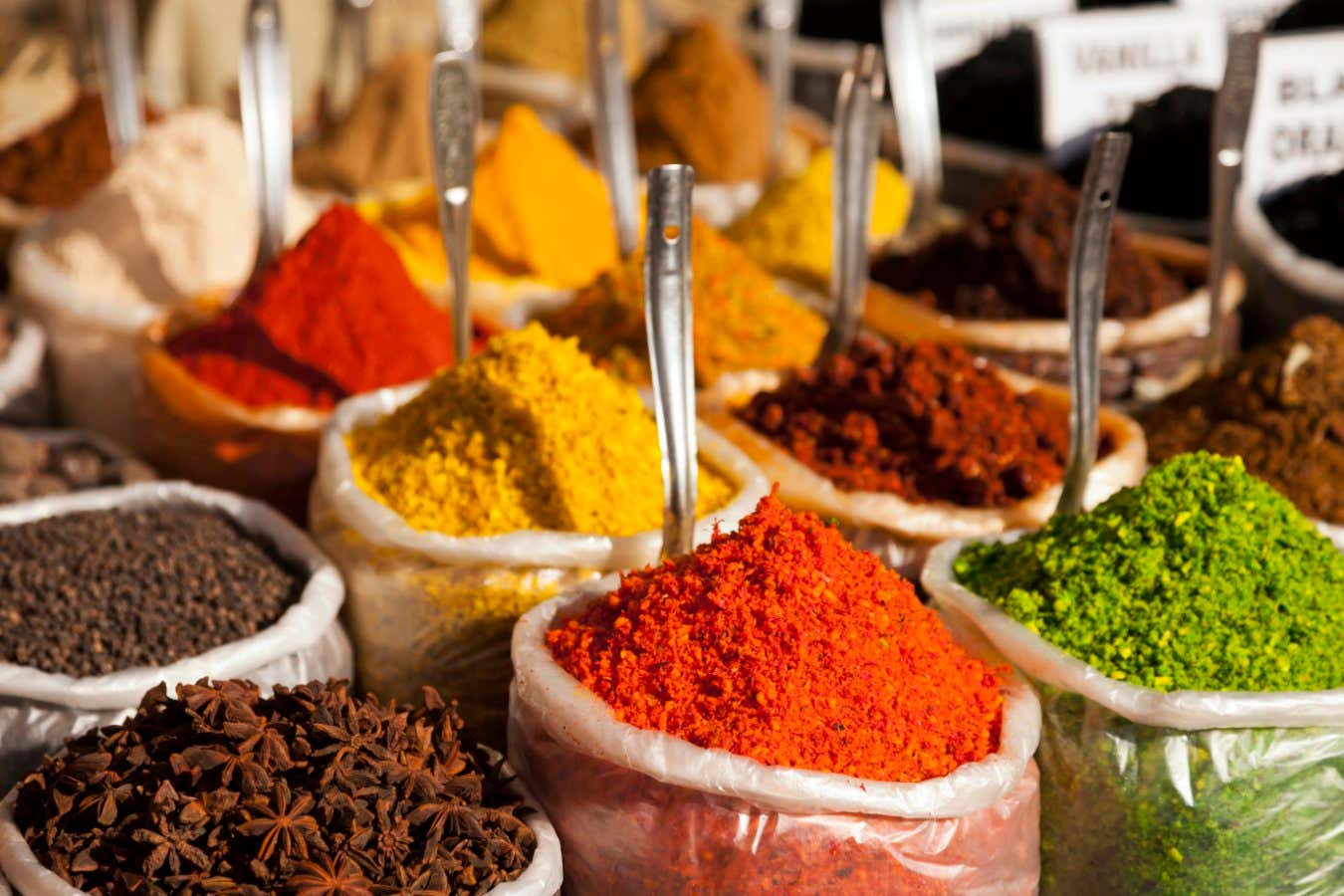Remnants of eight spices were found on a sandstone slab from an archaeological site in Vietnam, showing the early adoption of ingredients and techniques from south Asia
By Chen Ly
21 July 2023
Spices were traded between south Asia and South-East Asia more than 3000 years ago
Peter Schickert/Westend61/Getty Images
People may have been cooking curries in South-East Asia for at least 2000 years, according to traces of spices found on freshly unearthed stone tools in Vietnam.
During their digs at the Oc Eo archaeological site in southern Vietnam, Hsiao-chun Hung at the Australian National University in Canberra and her colleagues uncovered several sandstone grinding tools alongside remnants of spices.
An analysis of 717 grains of starch recovered from the tools revealed eight types of spices: turmeric, ginger, galangal, sand ginger, fingerroot, clove, nutmeg and cinnamon. Many of the grains also showed signs of deformation, which suggests that they were damaged from grinding and look similar to the starch granules found in modern curry powder.
Advertisement
“This finding strongly suggests that the ancient inhabitants of Oc Eo utilised turmeric, ginger and other spices like cinnamon, clove and nutmeg as essential ingredients in their culinary practices, highly likely in the preparation of curry,” says Hung.
A sandstone grinding slab found at Oc Eo in Vietnam, on which traces of spices were identified Khanh Trung Kien Nguyen
Maritime trading routes between South-East Asia and south Asia were established more than 3000 years ago, with spices such as nutmeg and clove coming from Indonesia and others such as turmeric and cinnamon from south Asia.
